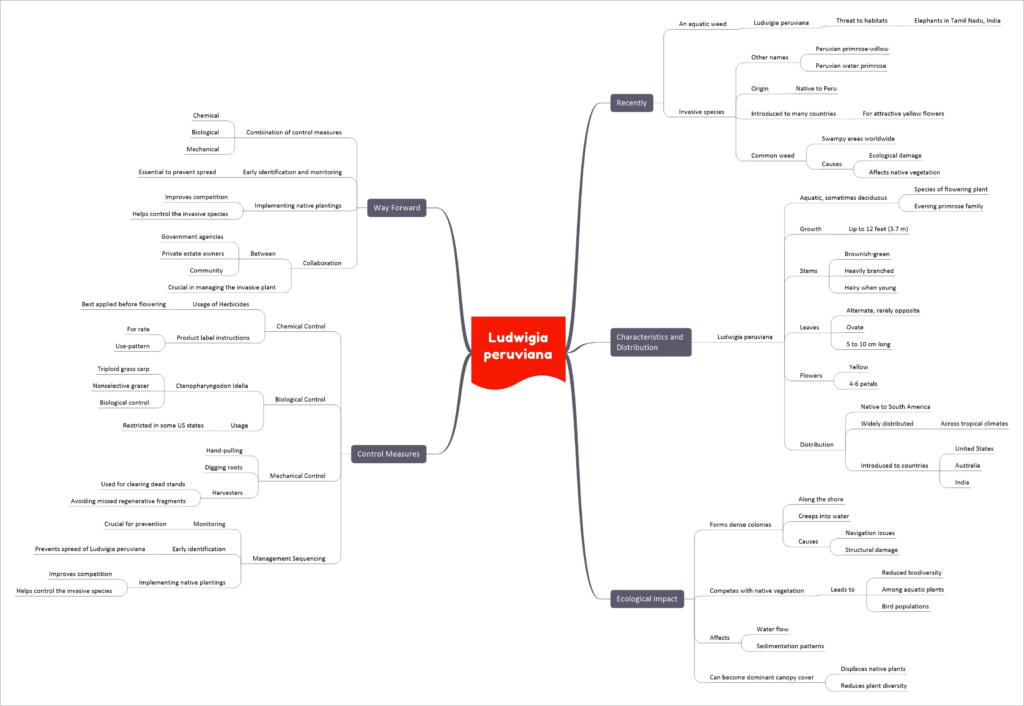Ludwigia Peruviana – Distribution, Impacts, Control Measures
Recently, an aquatic weed called Ludwigia peruviana has been posing a threat to the habitats of elephants in Tamil Nadu, India. This invasive species, also known as Peruvian primrose-willow or Peruvian water primrose, is native to Peru but has been introduced to many other countries for its attractive yellow flowers. It is now a common weed in swampy areas worldwide, causing ecological damage and affecting native vegetation.
This topic of “Ludwigia Peruviana – Distribution, Impacts, Control Measures” is important from the perspective of the UPSC IAS Examination, which falls under General Studies Portion.
Characteristics and Distribution
- Ludwigia peruviana is an aquatic, sometimes deciduous species of flowering plant in the evening primrose family.
- It can grow up to 12 feet (3.7 m) in height.
- Stems are brownish-green, heavily branched, and hairy when young.
- Leaves are alternate, rarely opposite, ovate, and 5 to 10 cm long.
- The flowers are yellow with 4-6 petals.
- Native to South America and widely distributed across tropical climates.
- Introduced to countries like the United States, Australia, and India.
Ecological Impact
- Forms dense colonies along the shore and creeps into the water, causing navigation issues and structural damage.
- Competes with native vegetation, leading to reduced biodiversity among aquatic plants and bird populations.
- Reduces water flow and affects sedimentation patterns.
- Can become the dominant canopy cover, displacing native plants and reducing plant diversity.
Control Measures
- Chemical Control
- Herbicides can be used, best applied before flowering.
- Follow product label instructions for rate and use-pattern.
- Biological Control
- Ctenopharyngodon Idella (Triploid grass carp) can be used as a nonselective grazer for biological control.
- Use is restricted in some US states.
- Mechanical Control
- Hand-pulling and digging roots can be effective.
- Harvesters may be used for clearing dead stands, avoiding missed regenerative fragments.
- Management Sequencing
- Monitoring and early identification are crucial in preventing the spread of Ludwigia peruviana.
- Implementing native plantings can improve competition and help control the invasive species.
Way Forward
- Employ a combination of chemical, biological, and mechanical control measures for effective management.
- Early identification and monitoring are essential to prevent its spread.
- Implementing native plantings can improve competition and help control the invasive species.
- Collaboration between government agencies, private estate owners, and the community is crucial in managing this invasive plant.


